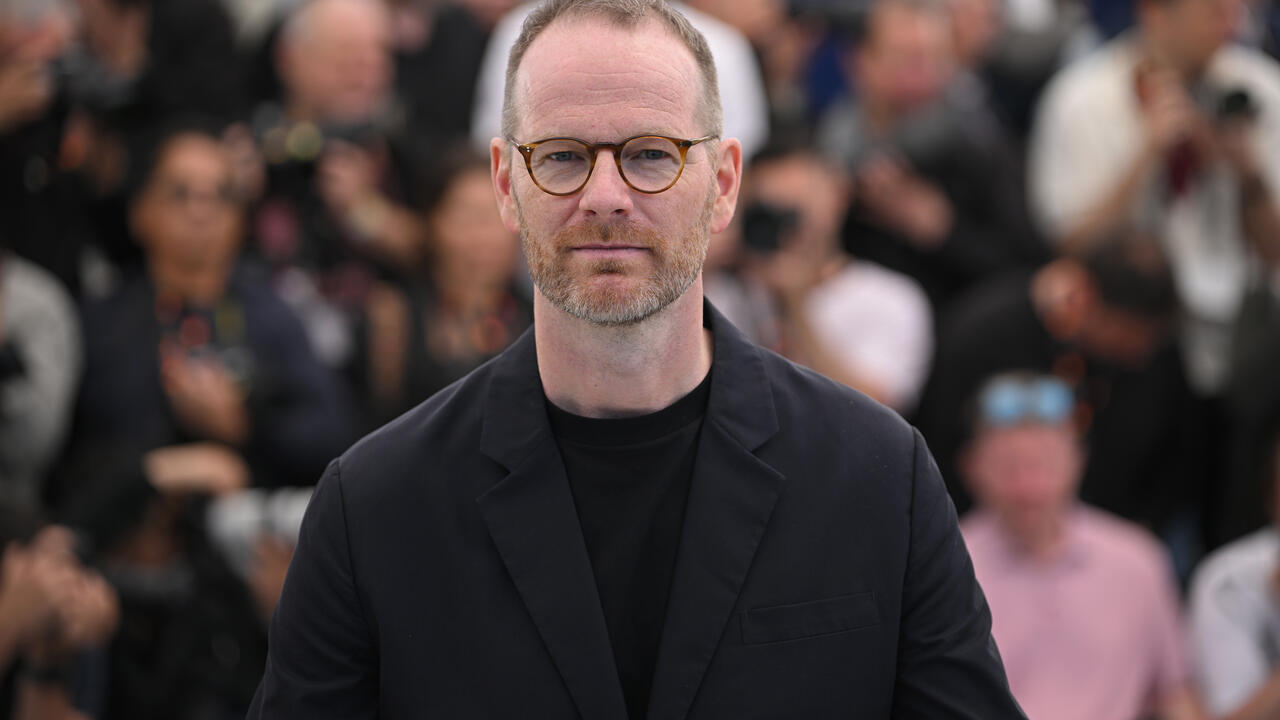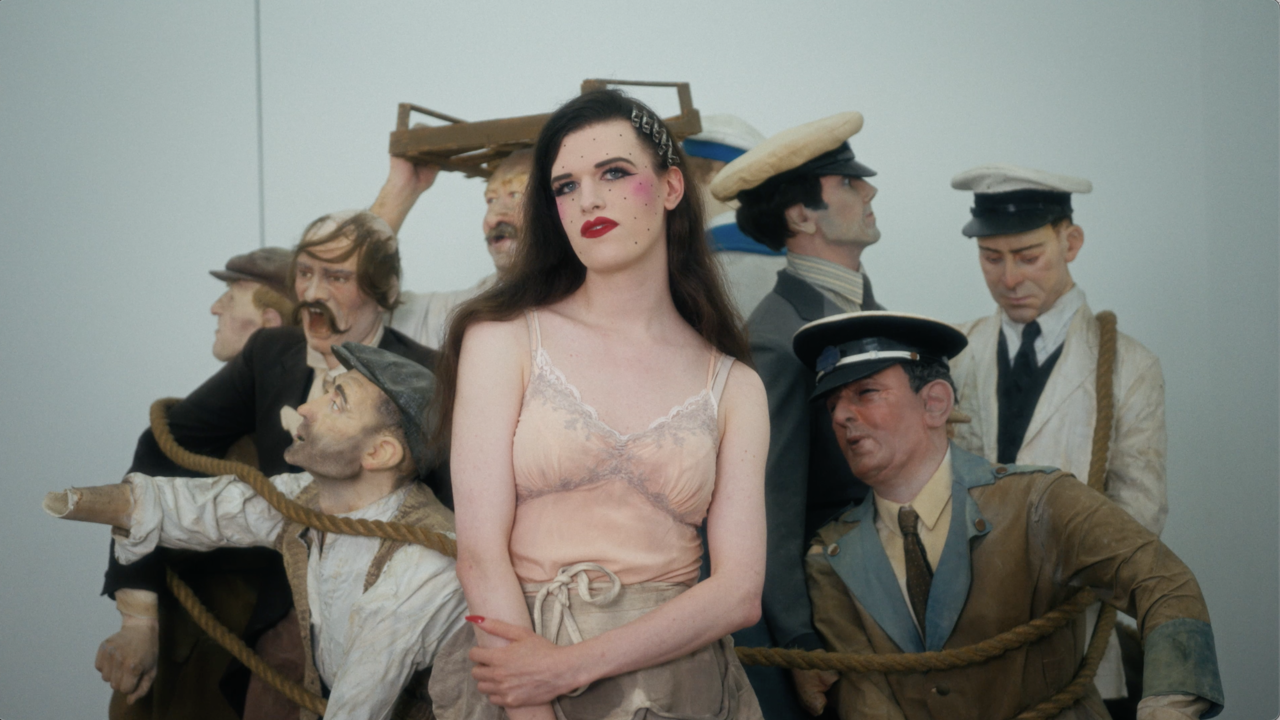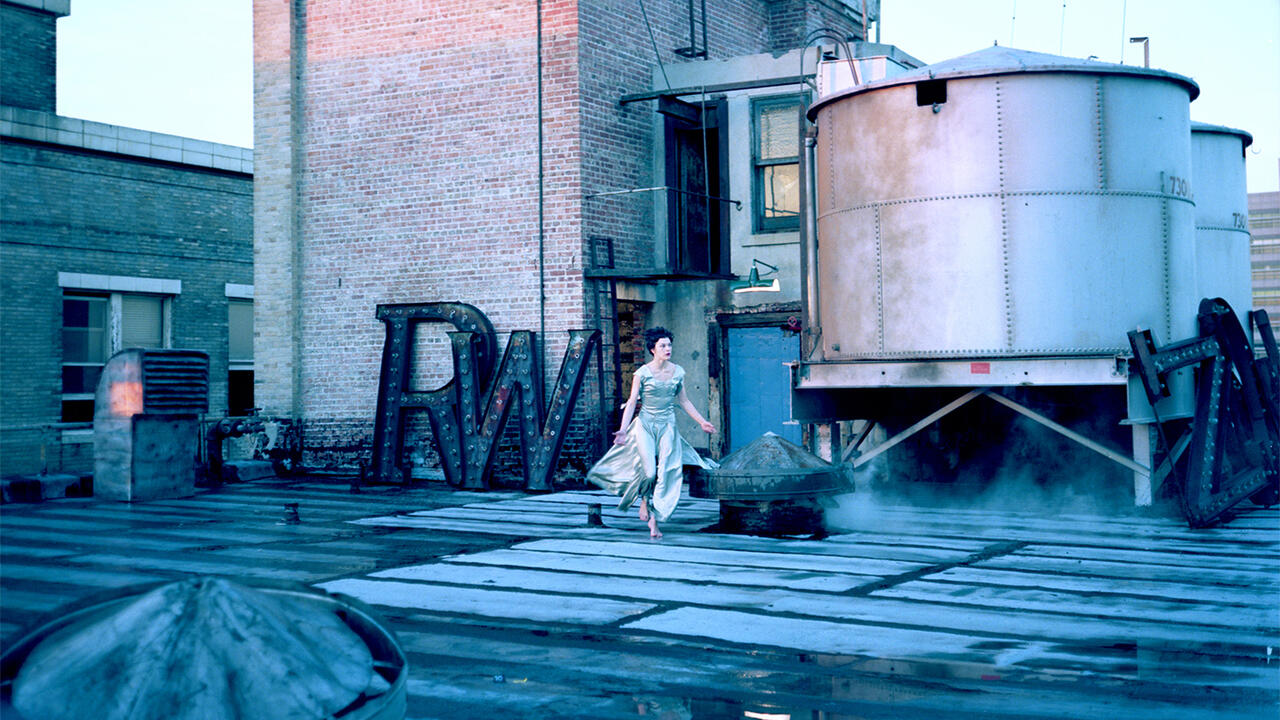In Focus: Marianna Simnett
Blood oaths and bodies under threat
Blood oaths and bodies under threat

That two audience members fainted during a recent screening of Marianna Simnett’s videos at the Serpentine Gallery Pavilion in London was neither surprising nor incongruous. Far from disrupting the event, these instinctive responses to the sensory onslaught seemed entirely appropriate. (This interpretation was seemingly shared by the security guards, who were initially reluctant to clear space for what they assumed to be a choreographed intervention.) The physically unsettling combination of imagery and sound – alternately shocking, soothing, sickening – is typical of an artist whose work elevates sense over speculation; by the end of an evening in which a trilogy of shorts was stitched together by live music and performance, I was equal parts exhilarated and exhausted.
Across The Udder (2014), Blood (2015) and Blue Roses (2015), the body – its digestive tracts, nasal passages and circulatory networks, respectively – provides the setting for a series of grim morality tales played out by a motley crew of children, cyborg cockroaches, sworn virgins and disembodied limbs. In each, we are transported directly into a biological system – whether human or animal – under threat of infection, disease or disorder. (Readers might be reminded of the sci-fi classic Fantastic Voyage, 1966, in which scientists on board a miniaturized submarine fight pitched battles with rogue blood cells, germs and assorted viruses.) This narrative is interleaved with a second story – set outside the body – with characters and themes carried across the two scenarios.

Much of The Udder – with which Simnett won the Jerwood/Film and Video Umbrella Award in 2014 – takes place inside a cow’s mammary gland, its four sections separated by translucent screens of crimson gauze. Children flit around its quarters, the violent psychodrama of their sibling relations adding to the prevailing sense of menace. (Two young brothers excitedly conspire to ‘cut [their sister] up […] dismantle her into a million bits so that she can never be rebuilt’ while the udder itself is threatened by mastitis, a common infection.) The central protagonist, a young girl, is forbidden from venturing outside the udder for risk of inviting ‘contamination’; at the Serpentine, a white-clad Greek chorus introduced the video with a haunting refrain: ‘Come inside, outside isn’t safe, it will hurt you.’ An oath of chastity is posited as the most effective defence against contagion; authority figures obsess over hygiene in an effort to maintain a strict boundary between the internal and external worlds. As one collapses into the other, we are left to make our own allegorical interpretations.
When we meet in her Deptford studio, Simnett talks about her determination to tether the political and the ideological to embodied experience. Influenced in her early work by the body politics of feminism’s ‘second wave’ (she shows me sketchbooks filled with homages to Jenny Holzer, Barbara Kruger and Cindy Sherman), her work proposes that we situate the body at the centre of debates about society and the self which are increasingly preoccupied with immaterial networks and non-corporeal identities. In Blood, we accompany the young girl from The Udder to Albania to stay with a ‘sworn virgin’: a woman who has taken an oath to remain chaste (vows, promises and pledges are recurring themes) in order to live as a man. She tells us that, in her society, ‘a girl can choose to become a man to escape marriage or simply for a better life. But there is one condition: you must promise to remain a virgin for the rest of your life! And if you ever break the promise, it can only be repaid with your blood.’

The story of the girl’s induction into society is entwined with another that, at first, seems unrelated, and which begins with the surgical removal of two bones from the lining of her nose. Having been cut out, these two turbinate bones are personified as spurned friends who exact revenge by gnawing indignantly on a giant, bloodied, papier-mâché proboscis. The two stories – one dramatizing a set of social relations, the other a crisis in the body – bleed into each other.
The notion that abstract values such as justice are insured by the body is so old as to be idiomatic in English – we demand a ‘pound of flesh’, make ‘blood oaths’ and insist that ‘heads will roll’ – but Simnett makes the link queasily explicit by splicing narrative of the making and breaking of promises with images of excision, dissection and amputation. When the sworn virgin tells us that ‘breaking the oath will cause shame and endless bloodshed’, for example, her speech is overlaid by footage of invasive surgery. (Simnett’s work is ‘surrealist’ in the manner of Un Chien Andalou (1929), cutting abruptly between images to foster nightmarish associations.)

A classically trained musician, Simnett also exploits the capacity of music to ‘act upon the body’ by leavening her videos with perversely catchy but nonetheless sinister ditties on such subjects as mastitis, turbinate bones and varicose veins, a neat détournement of the way in which adults instill normative values in children through the back door of nursery rhyme. The body is thus the medium through which the work is experienced, as much as that through which it is expressed, and Simnett works upon her audience’s emotions to effect a kind of catharsis.
Indeed, the artist’s commitment to the principle that ideas must be felt extends to her working process. In Blue Roses she recites a monologue about blood while suspended upside down by her knees from a horizontal bar, maintaining the position almost to the point of passing out. Her head is filled with blood, she says to camera; the literal and metaphorical uses of language align. In a pivotal work made in 2012, while she was still a student at the Slade, Simnett cuts documentation of the story of her grandfather – who survived a mass execution during the Holocaust because he lost consciousness and collapsed as the gunmen opened fire – with close-ups of herself hyperventilating. At the conclusion of the video she succeeds in cutting off the flow of oxygen to the brain and buckles sickeningly to the floor, audibly cracking her head. The video is called Faint.
Marianna Simnett lives and works in London. She was awarded the Jerwood/Film and Video Umbrella Award (2014–15), the Adrian Carruthers Award (2013) and the William Coldstream Prize (2013). In 2015, she had a solo exhibition at Comar, Isle of Mull, UK, a solo performance at Serpentine Gallery, London, and was included in group shows at CAC, Shanghai, China; Connecting Spaces, Hong Kong; Jerwood Space, London; and CCA, Glasgow, UK. Her video, Blue Roses (2015), is at the Bluecoat, Liverpool, UK, until 28 March.






















